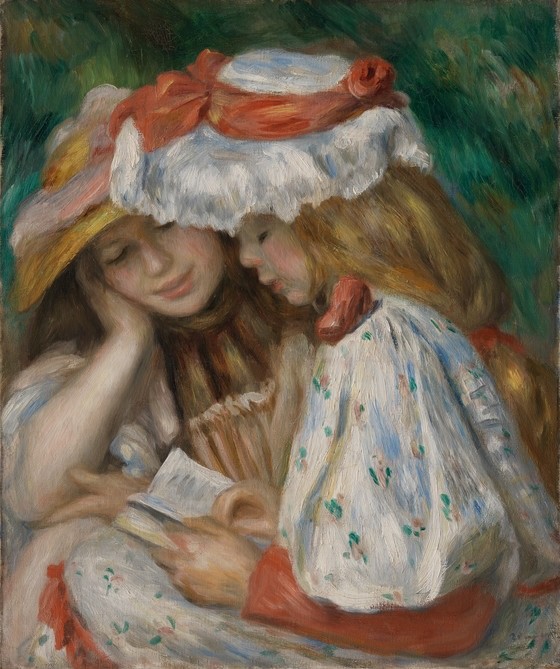Boy, oh, boy! The past couple weeks have brought unseasonably warm temperatures to the Midwest, and unusual flurries of questions concerning teaching children at their, so-called, “instructional levels.” Must be salesman season, or something.
One of the questions asked specifically about my colleague Dick Allington, since he has published articles and chapters saying that teaching kids with challenging text is a dumb idea. And, a couple of others queries referred to the advertising copy from Teachers College Press (TCP) about their programs. Both Dick and TCP threw the R-word (research) around quite a bit, but neither actually managed to marshal research support for their claims, which means that the instructional level, after 71 years, still remains unsubstantiated.
What I’m referring to is the long-held belief that kids learn more when they are matched to texts in particular ways. Texts can be neither too hard, nor too easy, or learning is kaput. At least that has been the claim. It sounded good to me as a teacher, and I spent a lot of time testing kids to find out which books they could learn from, and trying to prevent their contact with others.
According to proponents of the instructional level, if a text is too easy, there will be nothing to learn. Let’s face it, if a reader already knows all the words in a text, and can answer all of the questions already with no teacher support, it wouldn’t seem to provide much learning opportunity. Surprisingly, however, early investigations found just the opposite—the less there was to learn from a book, the greater progress the students seem to make. This was so obviously wrong, that the researchers just made up the criteria separating the independent and instructional levels.
Likewise, the theory holds out the possibility that some texts can be too hard. In other words, the more there would be to learn in a text, the less the students would be able to learn from it.
But what is too easy and what is too hard?
Back in the 1940s, Emmett Betts, reading authority extraordinaire, reported on a research study completed by one of his students. He claimed that the study showed that if you matched kids to text using the criteria he proposed (95-98% word reading accuracy and 75-89% reading comprehension), kids learned more.
Unfortunately, no such a study was done. Betts sort of just made up the numbers and teachers and professors have rapturously clung to them ever since. Generation after generation of teachers has been told teaching kids at these levels improves learning. (Though, due to Common Core, at least some programs have been advancing—arbitrarily—new criteria, perhaps in hopes of matching more students to books at the required levels.)
Over the past decade or so, several researchers have realized that this widely recommended practice is the educational equivalent of fake news, and have started reporting studies on its effectiveness. And, the instructional level has not done well; it either has made no difference—that is the kids taught from grade level materials do as well as those at an instructional level—or the instructional level placements have led to less learning. Instructional level placements have the tendency to limit kids’ exposure to the linguistic and textual features that they don’t yet know how to negotiate; the practice reduces their opportunity to learn. The kids not so protected, often do better.
It still makes sense to start kids out with relatively easy texts when they are in K-1, since they have to learn to decode. Beginning reading texts should have enough repetition and should provide kids lots of exposure to the most frequent and straightforward spelling patterns in our language. But, once that hurdle is overcome, it makes no sense to teach everybody as if they were 5-years-old. The studies are pretty clear that from a second-grade reading level on, kids can learn plenty when taught with more challenging texts.
Here are some related questions that have been asked of me over the past 2-3 weeks:
But my kids are learning to read and they have for years. Why change now?
Because of the opportunity cost; your students could do even better. Students often tell me that they hate reading specifically because they always get placed in what they call the “stupid kid books.” If kids can learn as much or more from the grade level texts—and they can—we should be giving them opportunities to read the texts that are more at their intellectual levels and that match their age-level interests.
Isn’t it true that the studies in which the kids did better varied not just the book levels, but how the students were taught?
Yes, that is true, and instructional level proponents have raised that as a complaint about these studies. However, no one is claiming that students will just learn more from harder books. As students, confront greater amounts of challenge the teaching demands go up. One suspects that part of the popularity of the instructional level idea is that the teacher doesn't have to do as much (since the kids start out knowing almost all the words and can read the texts with high comprehension with no teacher support).
What about older kids who are still “beginning readers?”
Anyone—at whatever age level—who is just starting to learn to read, is still going to need to master decoding. Teaching such older students with more demanding texts will just make it harder to master the relations between spelling and pronunciation. Definitely stay with relatively easy books with older readers who are reading at a kindergarten or first-grade level.
Are you saying no more small group teaching?
No, small group teaching is fine, unless the purpose of that grouping is to teach students with different levels of books. In fact, I think providing small group teaching to students when they are in the harder materials makes greater sense than how we tend to do it now (which is to put kids in easier materials when they work closely with the teacher—I’d do the opposite).
So you don’t believe in differentiation?
I believe in differentiation, but I don’t believe that means placing kids in different levels of books. There is a large and growing body of research that suggests that we could more profitably vary the amount and type of scaffolding for the needs of different students.
Dick Allington has admitted that some studies do show that kids can learn more from more challenging texts, but that the scaffolding in these studies is simply too demanding for the average teacher. What do you think?
Dick was referring to studies done by Alyssa Morgan and Melanie Kuhn (and their colleagues). In both, the frustration level placements led to more learning than the instructional level ones. In the Morgan study, she used paired reading, and the scaffolding was provided by untrained 7-year-olds (though they were the relatively better readers). I suspect most teachers can scaffold as well as a second-grader, and don’t find paired reading interventions to be beyond most teachers’ skills levels. I asked Melanie Kuhn directly about this criticism. She was surprised. Teachers in the original study had so easily used their teaching routines that Kuhn and company decided to collect data for an additional year. I reject the idea that only the most elite teachers can provide this kind of teaching.
So you totally reject the instructional level idea for anyone but beginners?
No, I’ve come to believe that the instructional level would be a great goal to aim at for at the completion of a lesson. If, when you are finishing up with a text, the kids know 75% or more of the ideas and can read 95% or more of the words, then you have done a terrific job. One of Linnea Ehri’s studies found that the kids who did best ended up with 98% accuracy, for instance. Of course, if you keep starting with texts at those levels, then you would have little to teach. Start kids out with complex texts that they cannot read successfully; then teach them to read those texts well.
Should all the texts that we teach from be at the levels that Common Core set?
No, I would argue (based on very little direct evidence—so I’m stretching a bit here) that students should read several texts across their school days and school years. This reading should vary greatly in difficulty, from relatively easy texts that would afford students extensive reads with little teacher support, to very demanding texts that could only be accomplished successfully with a great deal of rereading and teacher scaffolding. I believe that much is learned from that kind of varied practice.







Comments
See what others have to say about this topic.